- Home
- Jackie French
The Ghost of Howlers Beach Page 12
The Ghost of Howlers Beach Read online
Page 12
‘Yes, his name is Andrews, Gil Andrews. His address is the same as mine: the Very Small Castle, O’Bryan Headland. Yes, his two sisters are here. No symptoms yet. Of course I’ll keep an eye on them. Really? Yes, I’ll tell them. Thank you.’
They all stared at him as he came into the living room, but Butter knew what his father was going to say as soon as he saw his smile. ‘Gil is sitting up eating porridge,’ he said. ‘His fever is down and he can wriggle his toes.’
‘That’s good?’ asked Olive tremulously.
‘It means he should make a full recovery.’
‘And play cricket again?’ asked Butter.
‘It might take a while,’ added Dr O’Bryan cautiously. ‘His legs are obviously badly affected. But with hard work . . .’
‘Gil always works hard,’ said Olive proudly.
‘He’ll make it,’ said Dr O’Bryan. He put his arm around Butter again. ‘I think we’re all going to make it.’
CHAPTER 25
A YEAR LATER
The sky was as round as a blue balloon. Even the clouds seemed to dance. Cicadas shrilled in the gum trees on the headland under the hum of the tractor as it ploughed up another paddock to put under vegetables, near the small fenced graveyard that now held a single stone and two inscriptions.
The susso community had grown more potatoes than the whole camp could eat in the last year, as well as cabbage and silverbeet and beetroot and extra melons and enough tomatoes, rhubarb, marrows, melons and pumpkins to sell at their stall on the highway. They sold homemade tomato chutney too, pumpkin chutney, ginger and marrow jam, vegetable pickle (mostly marrow) as well as sweet rhubarb pies, and tomato and onion tarts — Auntie Cake’s recipes, cooked in the new stone wood-fired oven in the middle of the camp.
The shop on the highway had been only a table at first, hauled out of the attic of the Very Small Castle, but now there were six trestles, all piled high, under a newly built open log and corrugated-iron shed to keep off the sun and rain.
It had been a good year. Tish had made eight best friends at school and Olive was top of her class. And today Gil would play cricket on the beach for the first time since he’d left hospital. Lunch sat in the picnic basket in the rowing boat drawn up on the sand. After the cricket match, the adults would row around to the cove with the picnic basket, while Butter and Gil and Olive and Tish and Wooder slithered through the cave. Aunt Peculiar was sure she could still fit through the narrow opening, but Butter had visions of round Auntie Cake and long, broad Aunt Elephant stuck there forever, their legs waving out of the entrance.
Dr O’Bryan set up the stumps — proper cricket stumps — measuring the distance exactly.
‘Remember the rules of beach cricket,’ he said. ‘Rule one: hitting beyond the first wave is a six. Rule two: no leg before wicket if there are more than four legs.’ He meant if Olive was helping Tish bat. ‘Rule three: no one is ever out for a duck. You keep batting till you’ve scored.’
Because this wasn’t a proper cricket match, of course, not when most of the players were female, not just Tish and Olive and the Aunts, but Granny Andrews too.
Dad had gone to visit Toby Andrews’ parents while Gil was in hospital. He’d never told Butter what he’d said to them — or what they had said to him — but that evening at hospital visiting hours a woman in a good velvet hat and embroidered gloves had come to visit Gil with a box of chocolates, a bag of grapes and some rippingly good books from the Swallows and Amazons and Biggles series. She still never mentioned her husband, but she came to dinner at the Very Small Castle twice a week.
And now she was playing cricket, dressed in her tennis whites, just like the Aunts, and Olive and even Tish, who were learning tennis at school. Which was a COMPLETE waste of time, Olive said, when she could have been dissecting a frog or learning calculus instead, though Tish liked it.
Dad wore his cricket whites, and so did Butter. Tish had even put a white bow on Woofer, but it had vanished at the same time as the last slice of apple teacake disappeared.
Aunt Elephant captained the women’s team. She seemed quietly confident as Auntie Cake bowled Dad out for four on ten runs.
‘Hard luck, Pongo,’ called Auntie Cake, grinning. ‘Mixing cakes is better exercise than sitting at a desk all day and lifting nothing heavier than a stethoscope.’
‘I’m a bowler, not a batsman,’ said Dr O’Bryan, grinning back.
Butter faced Mrs Andrews then. She was more reserved than his aunts — she had even kept her shoes on in the sand — but she hugged a lot, not just her grandchildren but Woofer and Butter and even the Aunts. Butter had a feeling Mrs Andrews had been starved of hugs for a long time.
His bat slammed into the first ball. He nodded to Gil as they began to run between wickets then back again. Butter had been worried that Gil might stumble in the soft sand, despite the exercises all year. But even though his gait was a little jerky, Gil was fast enough to get the two runs in before Auntie Cake retrieved the ball.
Mrs Andrews bowled again, too wide. Butter let it go. He gave a tap to the third ball, not worth a run, and then a wide swipe at the fourth. The ball bounced into the shallows and he and Gil managed one run before Tish retrieved it.
Gil faced Mrs Andrews now as she swung her arm up with the ball.
Two runs.
Four runs.
Eight runs and Gil wasn’t even out of breath, as Mrs Andrews handed Aunt Elephant the ball.
Aunt Elephant gave a smile of deep satisfaction. She limbered up for a moment, then took a run up, letting go of the ball in a perfect overarm.
The ball spun up, up, up to the blue, then down, and Gil’s bat rose to meet it.
Smack! Bat hit ball with so much force Butter almost expected the solid ball to break. Instead, it sped like lightning along the beach, further and further . . .
‘Grab it!’ yelled Aunt Elephant to Olive, who was fielding at the far end.
‘Run, girl, run!’ screamed Auntie Cake jumping up and down as Butter and Gil ran between the wickets.
‘Snerkle!’ barked Woofer, suddenly joining in the game. He limped along the beach, even faster than Olive. He grabbed something in his jaws and sped back. He dropped it triumphantly at Aunt Elephant’s feet just as Gil started on another run.
‘No!’ yelled Butter. But it was too late. Gil was running and Butter had to run too, as Aunt Elephant bent to pick up the ball and slam it at the wicket and call him out.
Instead, she began to laugh, staring at the object in her hand. She laughed so hard that Gil stopped running. Butter stood too, as Aunt Elephant held up Woofer’s prize.
It was a dead seagull. Suddenly everyone was laughing, except for Woofer, sitting puzzled at Aunt Elephant’s feet, waiting for praise or a biscuit or, hopefully, both.
At last Aunt Elephant threw the dead bird into the waves. Woofer started after it and then decided not to, lying with his nose on his paws, waiting till someone decided to do something sensible, like have lunch.
Dr O’Bryan shaded his eyes. ‘There’s a cricket ball waiting somewhere down the beach,’ he pointed out. ‘Do you want to keep running, boys?’
‘Don’t be silly,’ said Aunt Peculiar. ‘Don’t you know the most important rule of beach cricket?’
Everyone else shook their heads.
‘If one of the fielders brings in a dead seagull the game is over,’ she declared. ‘Whoever had the last run wins.’
‘And whoever picked up the seagull has smelly hands,’ trumpeted Aunt Elephant, lifting up her skirts to wade into the waves and wash the stink off properly. ‘Time for lunch, I think.’ She nodded to the new rowing boat, pulled up high on the sand. ‘I hope you’ve saved some strength to help me row round to the cove, Pongo. It’s a good swell out there today.’
Butter met Olive’s eyes. She nodded. They headed to the entrance of the tunnel together, Gil and Tish and Woofer following.
Up the cliff, into the darkness, down the slide, but this time, like so many other t
imes, he could hear the others breathing, scuffling, laughing as they pushed Woofer through the cave too.
Then suddenly he was out, in the sunlight. And there was the driftwood house, a little more sand around it, blown up by the wind, but that could soon be swept away. The sound of wind twisted through the tunnel, but today’s wind just played a song.
‘I’ll get the fire lit and put the billy on,’ said Gil. ‘It’ll take them half an hour to row around the headland.’ Tish and Woofer ran to help him collect driftwood and dry tinder above the high-tide line.
Olive opened the shack door. And it was almost the same, as if it had been a year ago, though the rag rugs made so carefully with so much love had been taken up to the Very Small Castle for safekeeping, and dust sheets put on the chairs. The vast painting that had taken up one wall was gone too. It now hung in the hall of the Very Small Castle, the children and the baby and the smiling mother gazing down at everyone who came in.
And another painting faced it now. When Butter shut his eyes he imagined it was here too. It had taken Aunt Peculiar six months to paint. He had never known Aunt Peculiar could paint like that.
For this was a vast canvas that showed the beach, and the endless sweep of sky melting into the horizon. And on the sand three aunts, a grandmother, two fathers and two mothers, all arm in arm, watched four young people play a game of cricket on the beach, a cricket match of joy and possibilities, a cricket match that had no end.
AUTHOR NOTES
The Great Depression was triggered by the 1929 United States stock market crash. Encouraged by simplistic and short-sighted analysis from ‘experts’, and a feeling of optimism after the War, people borrowed money to buy shares in companies. The share prices kept going up so people borrowed more money to buy more shares, till finally the shares were worth far more than the companies. Then when the stock market dropped a little, people panicked and started to sell their shares before the price dropped even further — which meant, of course, that prices plummeted.
Banks asked people to repay their loans. When they couldn’t, many of the banks went broke too. More people lost their money . . . and so everything got worse.
Millionaires were declared bankrupt overnight. Many people decided to withdraw all their money from the banks, thinking that they would feel more secure if they could actually see and hold their cash — but as more people panicked in this way they created a ‘run’ on the banks. The banks shut their doors and refused to release funds.
Australia had also borrowed a lot of money from British banks to pay for sending troops to World War I. Now the British banks were in trouble too, and wanted all their money back — not just the interest on their loans.
Most of Australia’s money came from exporting wool and wheat and other crops and minerals, but now prices for those were falling around the world. Australia and Australians had big debts but less and less money.
Australia’s Prime Minister, James Scullin, asked British banker, Sir Otto Niemeyer, for advice. Sir Otto suggested that the state and Commonwealth (federal) governments all cut costs by reducing wages and pensions so Australia could continue paying back money to England.
This did not impress a lot of Australians. They thought Sir Otto was putting Britain’s interests ahead of Australia’s. Australia had fought the War to help Britain — and now Australia’s economy was at risk because they had to pay for it.
At last Scullin and five state premiers came up with what they called the Melbourne Agreement: to balance the budget by no further overseas borrowing, cutting wages and pensions and reducing other government spending to pay back the loans to Britain.
But the New South Wales Premier, Jack Lang, disagreed. He decided that his government would stop paying any interest back to British banks and British bondholders until the debts were ‘restructured’ — making them easier to repay. His government would only pay three per cent interest on those debts too.
Instead, he’d use the money to create jobs, working on projects like making new roads and planting forests. He also demanded that the Commonwealth Government pay back loans to New South Wales. Lang also put restrictions on landlords evicting tenants who couldn’t pay and stopped landlords selling tenants’ furniture.
Finally, Lang ordered public servants not to pay money into the federal treasury. Prime Minister Scullin believed this was against the law — and that Lang was just stirring up a lot of trouble.
Lang had to go!
On 13 May 1932, the federal government asked the New South Wales Governor, Sir Philip Game — who was still officially the representative of the King and so the ‘real’ ruler of New South Wales — to dismiss Lang.
He did.
There was an uproar — but there was also nothing anyone could do to stop the King’s representatives sacking a Premier that Australia had elected.
THE SUSSO
Unemployment became a big problem. In some areas one in three or four men was unemployed. But these figures did not show the complete picture as women weren’t counted in unemployment statistics. Men were regarded as the ‘real’ workers in those days — even if the women weren’t married or their husbands had died.
Thousands of men went ‘on the wallaby’ — travelling around the country hoping for a job or even a few hours’ work so they could eat or send a bit of money home.
Evictions were common: families thrown out onto the street with their few belongings and their kids crying because they couldn’t pay the rent. In 1931, police started to help evict tenants too.
The Unemployed Workers’ Union (UWM) and the police were soon involved in often bloody battles, with the UWM members barricading the police out.
Long queues grew outside any factory that had advertised a single job.
There were many demonstrations in every city, like Melbourne’s anti-starvation crusade in April 1930. But all the government could offer was a small benefit for unemployed men — ‘the susso’ (short for sustenance payment) or ‘dole’. The amount varied from state to state, but it was worth about ten shillings a week for married men and five shillings for single men.
But the dole wasn’t paid as money. Instead, you had to turn up once every week and have five or ten shillings’ worth of food thrown into your old hessian sugarbag — usually a hunk of meat, potatoes, some loaves of bread, tea and maybe some sugar or golden syrup — either at a local police station or a government relief depot like local town hall or shops.
Some towns would only let people collect the susso once, or for a month, to make unemployed people move on and not camp near their town. If stramgers stayed too long they were thrown in gaol.
Later on people were given coupons they could exchange for food instead. You had to take your coupons to different shops — the grocer, the butcher and the baker.
Women didn’t get the susso even though about twenty-five per cent of breadwinners — main income earners in a family — were women, partly because so many had been widowed in the War, or their husbands had returned with physical or mental injuries making it impossible for them to work. Many men also suffered injuries at work, and without Workers’ Compensation or many of the medicines we take for granted today like antibiotics, so many illnesses or injuries often lasted for a much longer time than they would now.
MAKING DO
People who lived through the Depression were masters of ‘making do’. This included the following:
old jumpers were pulled apart and the wool was used again for other jumpers, singlets or socks
shirt collars were ‘turned’ — taken off and turned inside out and sewed on again when they became frayed
babies slept in cupboard drawers instead of cradles and were given rattles made out of old wooden cotton reels
old clothes were taken apart and made into ‘new’ clothes. If an item of clothing was too tatty even for that it was plaited and sewn into rag rugs or small pieces were used to make quilts. And if they were too thin even for that, they became cloths for dusting
or cleaning or ‘snot rags’ for blowing your nose
old wooden fruit boxes were given cushions and made into chairs or nailed together to make shelves or even bedsteads
kerosene tins were opened out and hammered flat to make the walls of sheds or huts to live in, or left intact and stacked together to make a set of drawers or given a wire handle and used as a bucket.
Very few kids had ever had new clothes. Unless you were rich or had no older cousins, siblings or bigger kids next door, you wore hand-me-downs — clothes someone else had grown out of. And when Dad’s trousers wore out at the knee they were chopped off and became baggy shorts for a boy, held up by a belt or braces.
BREAD AND SCRAPE
Dripping — the melted fat from roasted meat — was used for all sorts of things. It was added instead of butter or margarine in puddings or cakes and spread on bread, which made it ‘bread and scrape’; it was simmered with rose petals to make hand or face cream; or it was rubbed into shoes to make them shiny and a bit more waterproof.
By the end of the 1930s, things were getting better, mostly because conditions overseas were improving too and prices for Australian goods were rising again. But things were still bad for many people — some returned soldiers still hadn’t had a job since they came home, and many people remained unemployed till the labour shortages of World War II.
INDIGENOUS DISPOSSESSION
The 1930s was a time of extreme racism.
Most Indigenous people had to live on ‘reserves’ or in government compounds — not on the land that had been theirs for tens of thousands of years. They lived in small houses at best, or even kerosene-tin or corrugated-iron shelters with dirt floors, no running water or lighting. Cut off from their own food sources, agriculture and hunting, they had the poorest of rations to eat. They weren’t allowed to leave the reserves without permission, and ‘half-castes’ — anyone with any ‘white’ blood — could be forbidden from going on to a reserve even to visit. Young people who managed to find jobs off a reserve might be forbidden to go back and visit their family. Children with white fathers were often taken from their Indigenous mothers; in other places all Indigenous children might be taken away to be ‘educated’ as servants or stockmen. This is now called ‘The Stolen Generations’: an unknown number of Indigenous children removed from families, communities and land, often not knowing even where they had been taken from, and with no way to return.

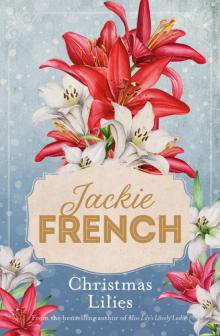 Christmas Lilies
Christmas Lilies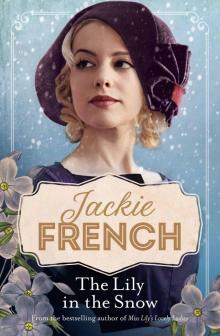 The Lily in the Snow
The Lily in the Snow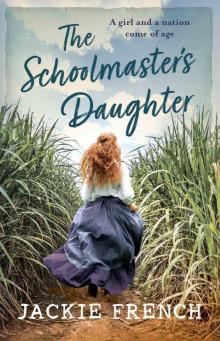 The Schoolmaster's Daughter
The Schoolmaster's Daughter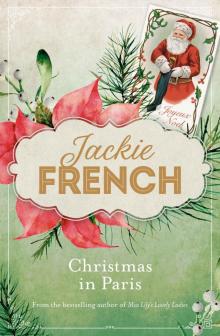 Christmas in Paris
Christmas in Paris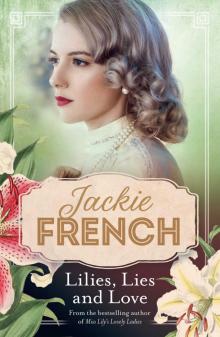 Lilies, Lies and Love
Lilies, Lies and Love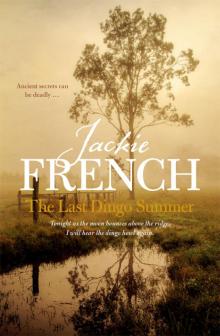 The Last Dingo Summer
The Last Dingo Summer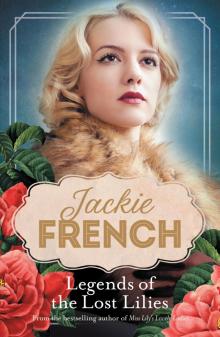 Legends of the Lost Lilies
Legends of the Lost Lilies Just a Girl
Just a Girl Pirate Boy of Sydney Town
Pirate Boy of Sydney Town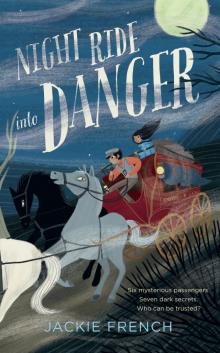 Night Ride into Danger
Night Ride into Danger The Secret of the Youngest Rebel
The Secret of the Youngest Rebel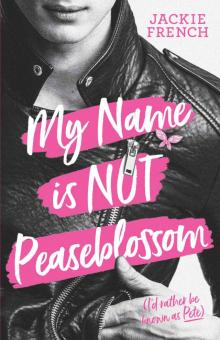 My Name is Not Peaseblossom
My Name is Not Peaseblossom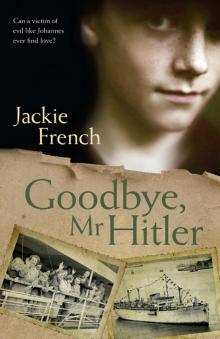 Goodbye, Mr Hitler
Goodbye, Mr Hitler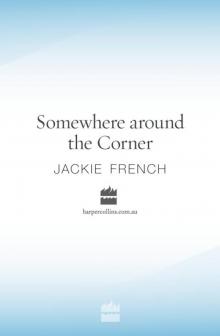 Somewhere around the Corner
Somewhere around the Corner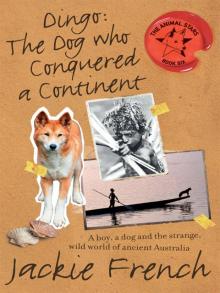 Dingo: The Dog Who Conquered a Continent
Dingo: The Dog Who Conquered a Continent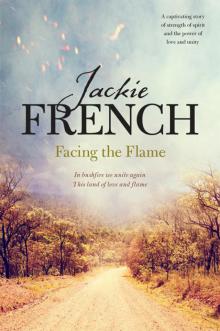 Facing the Flame
Facing the Flame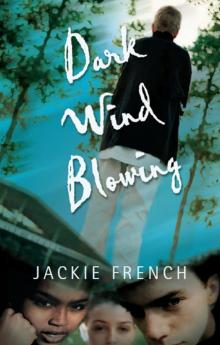 Dark Wind Blowing
Dark Wind Blowing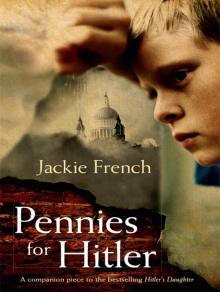 Pennies For Hitler
Pennies For Hitler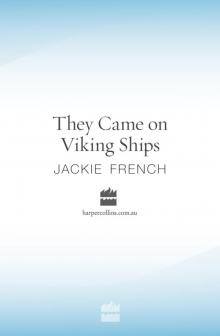 They Came On Viking Ships
They Came On Viking Ships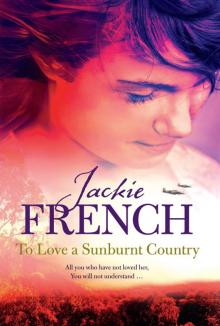 To Love a Sunburnt Country
To Love a Sunburnt Country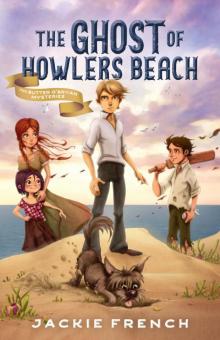 The Ghost of Howlers Beach
The Ghost of Howlers Beach The Girl from Snowy River
The Girl from Snowy River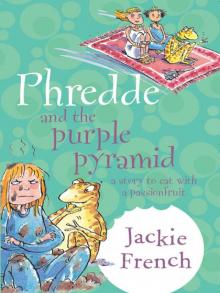 Phredde and the Purple Pyramid
Phredde and the Purple Pyramid The Secret of the Black Bushranger
The Secret of the Black Bushranger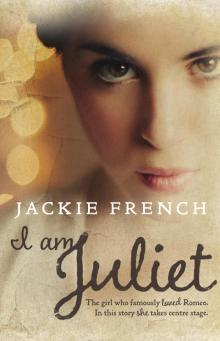 I Am Juliet
I Am Juliet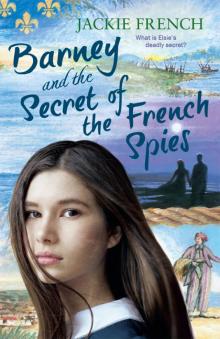 Barney and the Secret of the French Spies
Barney and the Secret of the French Spies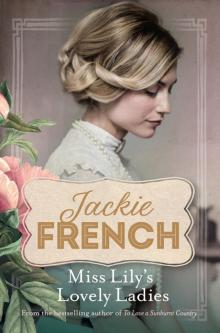 Miss Lily’s Lovely Ladies
Miss Lily’s Lovely Ladies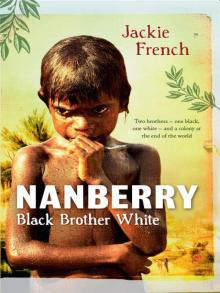 Nanberry
Nanberry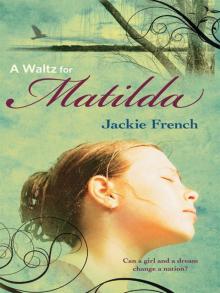 A Waltz for Matilda
A Waltz for Matilda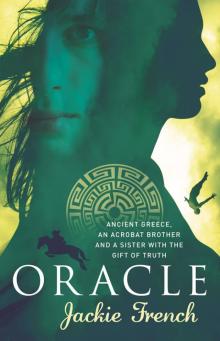 Oracle
Oracle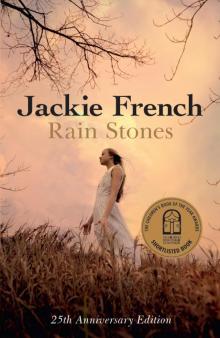 Rain Stones 25th Anniversary Edition
Rain Stones 25th Anniversary Edition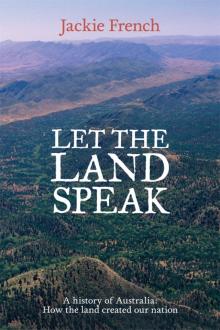 Let the Land Speak
Let the Land Speak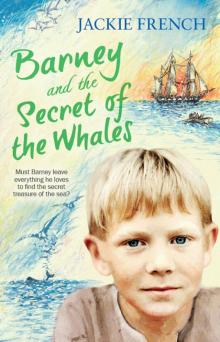 Barney and the Secret of the Whales
Barney and the Secret of the Whales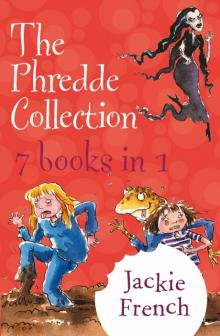 The Phredde Collection
The Phredde Collection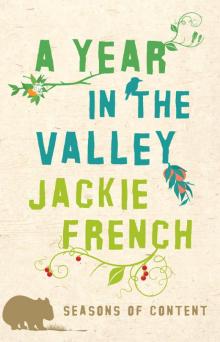 Year in the Valley
Year in the Valley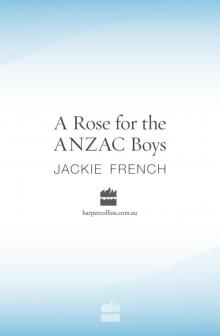 A Rose for the Anzac Boys
A Rose for the Anzac Boys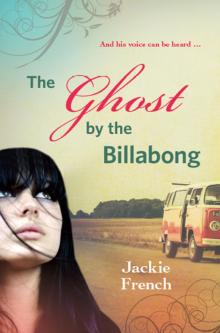 The Ghost by the Billabong
The Ghost by the Billabong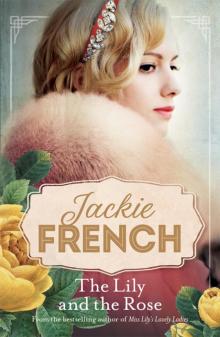 The Lily and the Rose
The Lily and the Rose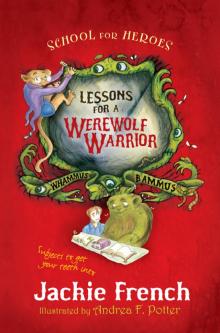 Lessons for a Werewolf Warrior
Lessons for a Werewolf Warrior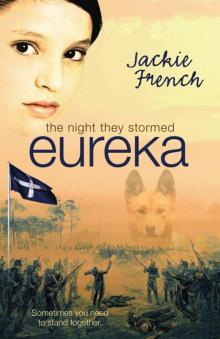 The Night They Stormed Eureka
The Night They Stormed Eureka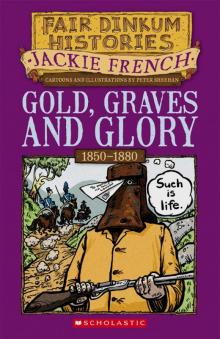 Gold graves and glory
Gold graves and glory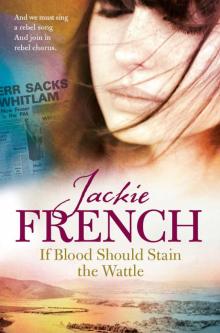 If Blood Should Stain the Wattle
If Blood Should Stain the Wattle The Book of Horses and Unicorns
The Book of Horses and Unicorns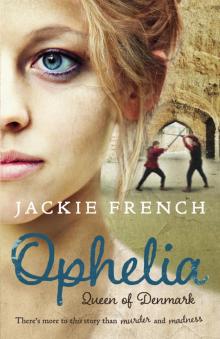 Ophelia
Ophelia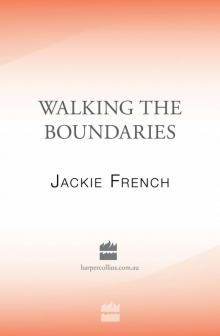 Walking the Boundaries
Walking the Boundaries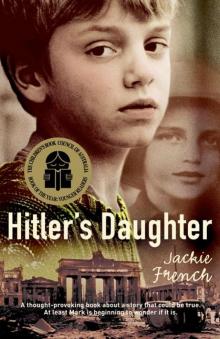 Hitler's Daughter
Hitler's Daughter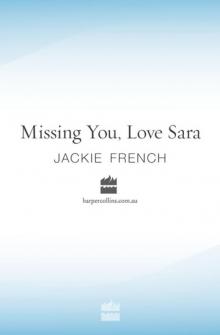 Missing You, Love Sara
Missing You, Love Sara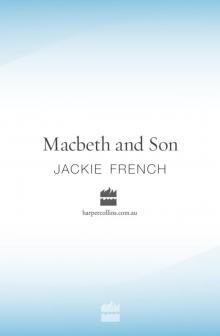 Macbeth and Son
Macbeth and Son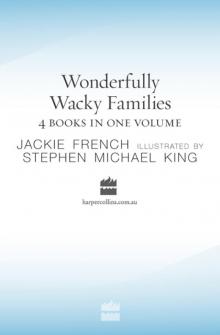 Wonderfully Wacky Families
Wonderfully Wacky Families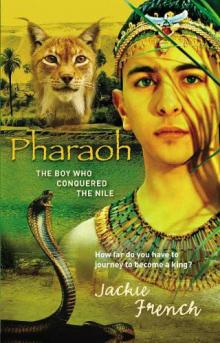 Pharaoh
Pharaoh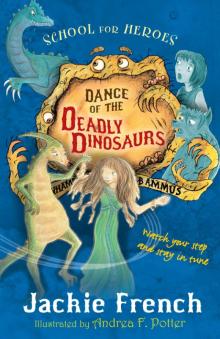 Dance of the Deadly Dinosaurs
Dance of the Deadly Dinosaurs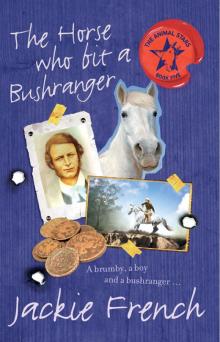 The Horse Who Bit a Bushranger
The Horse Who Bit a Bushranger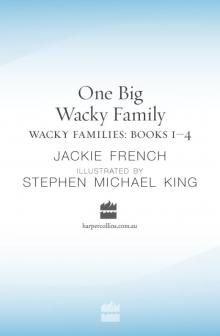 One Big Wacky Family
One Big Wacky Family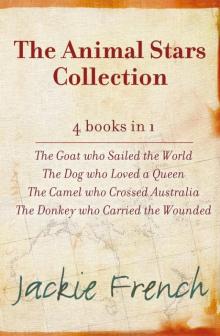 The Animal Stars Collection
The Animal Stars Collection Refuge
Refuge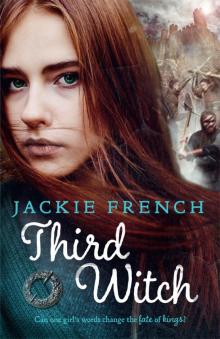 Third Witch
Third Witch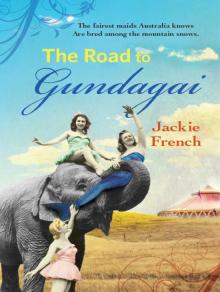 Down the Road to Gundagai
Down the Road to Gundagai